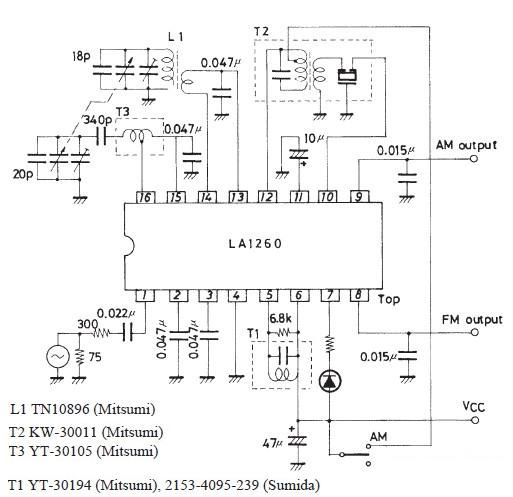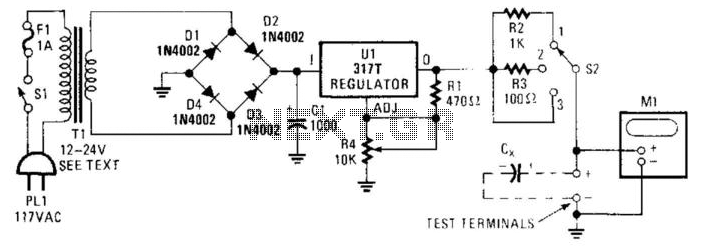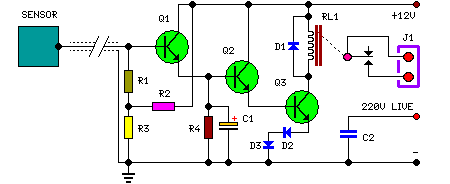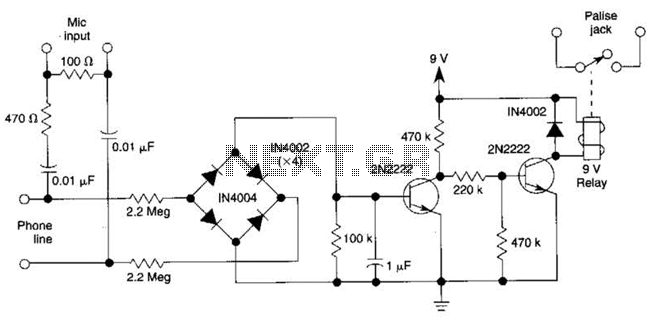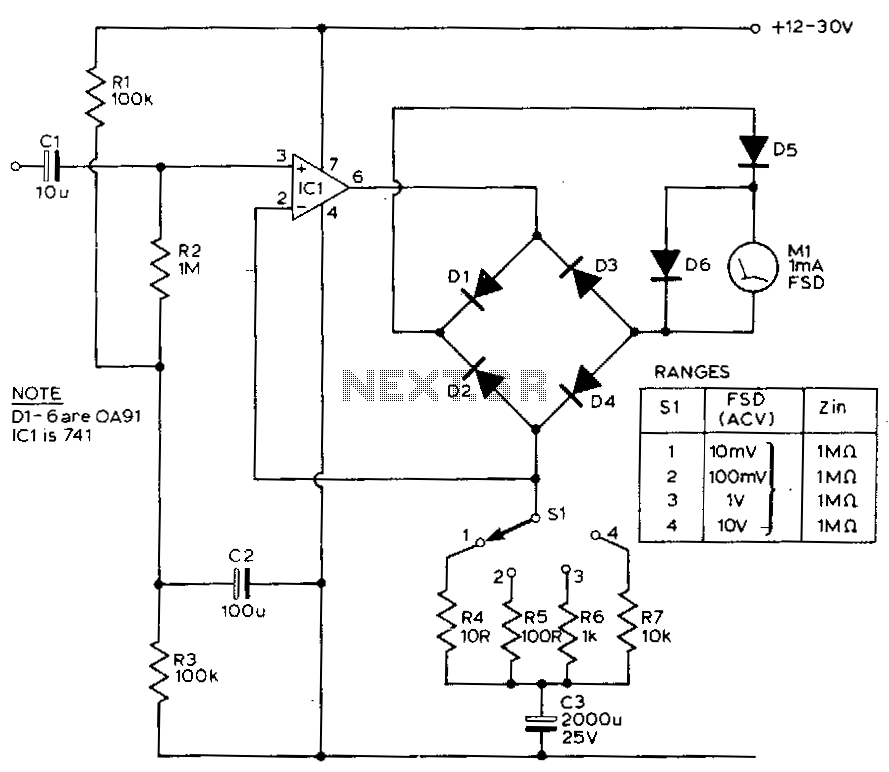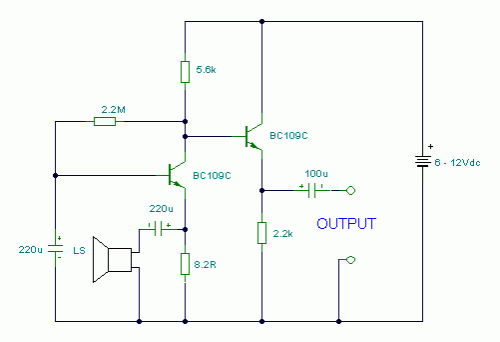
Dual drive ICs 10LED level meter circuit

The circuit consists of dual drive integrated circuits (ICs) utilized in a 10 LED level meter configuration. The schematic features two TLM8101 driver ICs, which can be employed as alternatives.
The 10 LED level meter circuit is designed to provide a visual representation of voltage levels through the illumination of LEDs. In this circuit, the dual drive ICs play a crucial role in controlling the LEDs based on the input voltage levels. The TLM8101 is a versatile driver capable of managing multiple LEDs, making it suitable for this application.
The circuit typically operates by receiving an analog input voltage, which is then compared against predefined thresholds. As the input voltage varies, the corresponding LEDs illuminate sequentially, indicating the level of the input signal. Each LED corresponds to a specific range of voltage, and the dual drive configuration allows for more efficient control and reduced power consumption.
The TLM8101 ICs can be configured for different driving capabilities, allowing flexibility in the number of LEDs that can be lit simultaneously. The design may include resistors to limit the current through the LEDs, ensuring they operate within safe limits. Additionally, capacitors may be used for smoothing any fluctuations in the input signal, providing a more stable output.
For implementation, it is essential to consider the power supply requirements of the TLM8101 and the forward voltage ratings of the LEDs used. Proper heat dissipation methods should also be applied to prevent overheating during operation. Overall, this dual drive LED level meter circuit is an effective solution for visualizing voltage levels in various electronic applications.Dual drive ICs 10LED level meter circuit Dual-drive IC is shown in the IO LED level meter circuit, the figure of two TLM8101 driver IC can also be used instead.
The 10 LED level meter circuit is designed to provide a visual representation of voltage levels through the illumination of LEDs. In this circuit, the dual drive ICs play a crucial role in controlling the LEDs based on the input voltage levels. The TLM8101 is a versatile driver capable of managing multiple LEDs, making it suitable for this application.
The circuit typically operates by receiving an analog input voltage, which is then compared against predefined thresholds. As the input voltage varies, the corresponding LEDs illuminate sequentially, indicating the level of the input signal. Each LED corresponds to a specific range of voltage, and the dual drive configuration allows for more efficient control and reduced power consumption.
The TLM8101 ICs can be configured for different driving capabilities, allowing flexibility in the number of LEDs that can be lit simultaneously. The design may include resistors to limit the current through the LEDs, ensuring they operate within safe limits. Additionally, capacitors may be used for smoothing any fluctuations in the input signal, providing a more stable output.
For implementation, it is essential to consider the power supply requirements of the TLM8101 and the forward voltage ratings of the LEDs used. Proper heat dissipation methods should also be applied to prevent overheating during operation. Overall, this dual drive LED level meter circuit is an effective solution for visualizing voltage levels in various electronic applications.Dual drive ICs 10LED level meter circuit Dual-drive IC is shown in the IO LED level meter circuit, the figure of two TLM8101 driver IC can also be used instead.
Warning: include(partials/cookie-banner.php): Failed to open stream: Permission denied in /var/www/html/nextgr/view-circuit.php on line 713
Warning: include(): Failed opening 'partials/cookie-banner.php' for inclusion (include_path='.:/usr/share/php') in /var/www/html/nextgr/view-circuit.php on line 713
